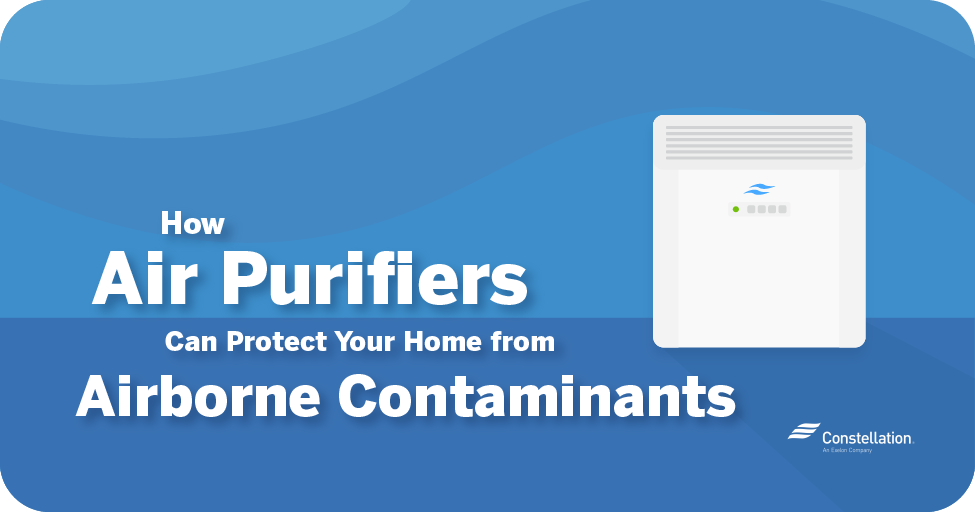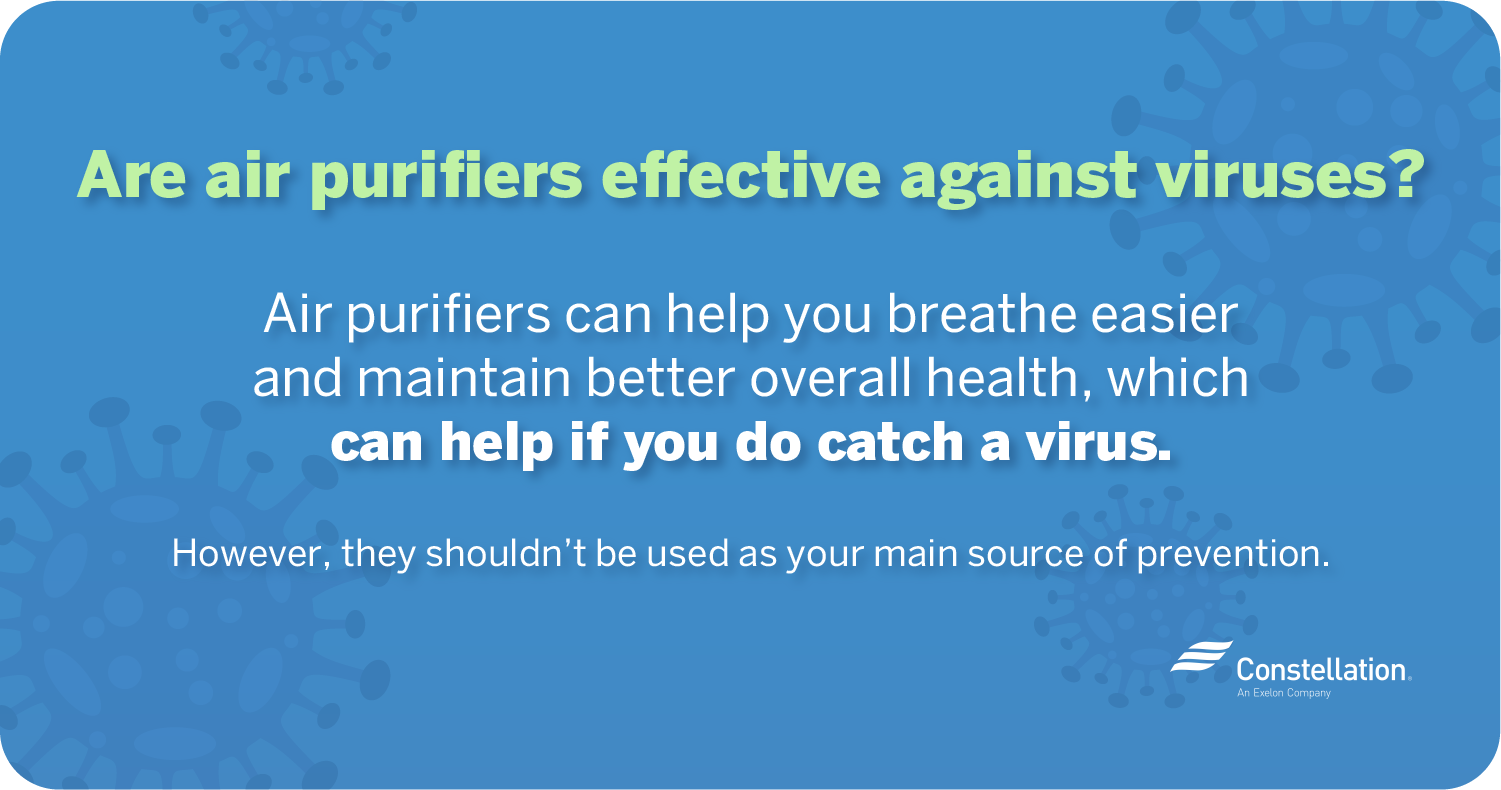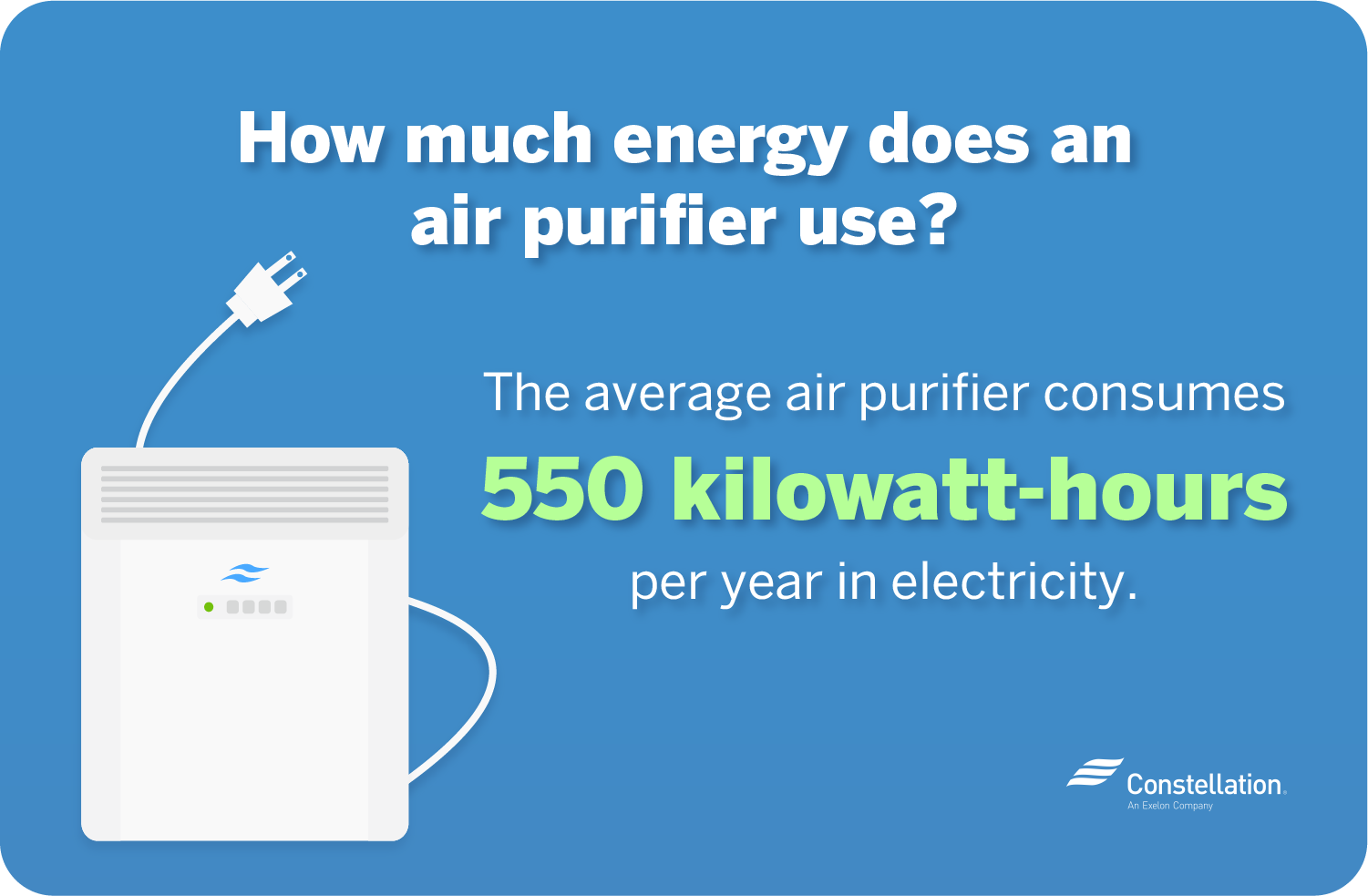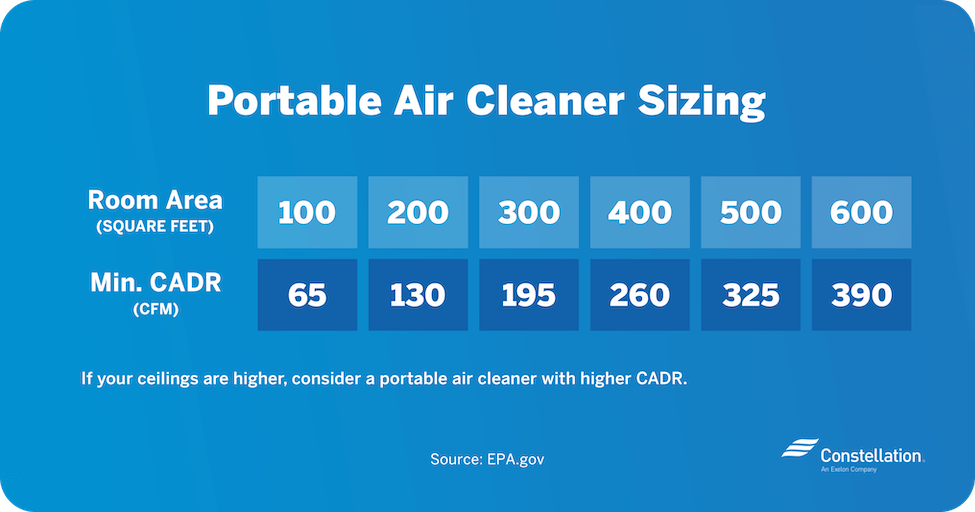
- Category:
Energy Efficiency -
Last updated:
November 3, 2020
How Air Purifiers Can Protect Your Home from Airborne Contaminants
According to the U.S. Consumer Product Safety Commission, the average American spends approximately 90% of their life indoors. As a result, many Americans are exposed to a wide range of indoor air pollutants over long periods of time. This is especially true in their homes — a problem scientists have identified as one of the most important environmental issues in the United States.
Contact with individual air pollutants may cause minimal harm. But chronic or long-term exposure to multiple sources of indoor air pollution can lead to serious health effects, such as an increased risk of cancer. Children, older adults and people with chronic illnesses are in the highest risk groups. Fortunately, it’s fairly easy to improve indoor air quality with the help of an energy-efficient air purifier.
What is the ideal indoor air quality?
Indoor air quality is a way to quantify the number of pollutants present as well as the temperature and relative humidity of the air in a building. Ideal indoor air quality has as little air pollution as possible, combined with a comfortable temperature and ideal home humidity levels. Individual states have their own more precise definitions of ideal air quality, depending on factors like season and climate.
Do I need an air purifier? How will I know?
Sometimes homeowners notice strange odors or start to feel sick, only to realize the cause is poor indoor air quality. The effects of air pollution vary based on the type of contaminant, but the EPA reports that many people experience eye, nose, throat and mouth irritation upon exposure. These health effects may be immediate or take months or even years to develop.
In other cases, air pollution may not produce noticeable symptoms. But with a home air quality test kit or the help of an air quality professional, you can identify pollutants. Air purifiers can be effective at removing many different kinds of contaminants from your home’s air. People often invest in air purifiers to keep their respiratory systems in good shape.
Sources of indoor air pollution
Indoor air pollution comes from many different sources. Molds, animal hair and dander, spores, pollen, dust mites and bacteria are all common, as is secondhand tobacco smoke. Airborne viruses, such as influenza, have the ability to contaminate the air in your home as well.
Harmful gases can also pollute your home’s air. For instance, radon may seep into the house through cracks in the foundation, floors or walls. Older buildings may expose residents to gases from asbestos, formaldehyde or lead. Even cooking fumes contribute to indoor air pollution.
How do air purifiers work?
Air purifiers use internal fans to pull air into a series of filters. Next, the filters trap any airborne particles that may be lingering in your home. The fan then recirculates the purified air back into the room. To ensure that your air purifier remains effective, it’s best to replace the filters every three to six months.
The best air purifiers trap airborne particles as small as 2.5 micrometers, including organic compounds and byproducts from motor vehicles, fire and cigarette smoke, and some industrial processes. This is important because our bodies have no defense against such small particles, which can enter and damage the lungs.
Are air purifiers effective against viruses?
Air purifiers can be an essential part of preventing the spread of diseases and viruses. They help you breathe easier and maintain better overall health, which can help if you do catch a virus. However, they shouldn’t be used as your main source of prevention. The best way to limit the spread of harmful germs at home is by washing your hands often, disinfecting your living space as much as possible and being cautious about who and what you bring into your house.

More ways to improve the indoor air quality of your home
Although air purifiers are effective at improving indoor air quality, they aren’t the only solution. The following clean-air tips can also help:
- Open your windows. Open windows can improve ventilation and allow the pollutants in your home to be removed to the outside.
- Change your HVAC filters often. Replacing the filters in your HVAC system helps prevent built-up dust and contaminants from getting blown through your ducts and into your home. Generally, they should be replaced every three months.
- Buy some houseplants. Plants don’t just improve your home’s appearance — they also help improve your air quality. Some plants in particular, such as spider plants and lilies, are thought to be especially good at absorbing airborne contaminants.
- Keep your fans running. If you have a centralized filter, using energy-efficient ceiling fans to circulate clean air can help freshen the atmosphere throughout your home.
- Vacuum and sweep your floors. Using an energy-efficient vacuum cleaner to clean up the dust and other allergens that accumulate on your floors is another simple and effective way to improve indoor air quality.
- Maintain normal humidity. Higher levels of humidity can lead to mold growth, which is bad for your air quality. That’s why it’s best to manage the humidity in your home, especially in kitchens, bathrooms and other potentially humid areas.
- Make your home a no-smoking zone. Tobacco smoke contains more than 7,000 chemicals, hundreds of which are toxic. By making your home a smoke-free zone, you’ll prevent these harmful toxins from entering the air, improving your indoor air quality.
What are the benefits of air purifiers?
By improving indoor air quality, you can avoid health problems and boost your overall wellness. So, what do air purifiers do to help? They remove dust and contaminants from the air, making it easier and safer for you to breathe. The best air purifiers capture extremely small particles, including bacteria. Air purifiers can be portable, like the Sharp Plasmacluster Ion Air Purifier with True HEPA Filtration, or they can be installed as part of your existing HVAC system.
7 Benefits of Air Purifiers
Using air purifiers in your home can offer the following benefits:
- Improved air quality.
- Reduced airborne particles and gases.
- Improved cardiovascular and respiratory conditions.
- Decreased asthma and allergy symptoms (even the best air purifiers may not be able to eliminate all symptoms, but some will improve).
- No significant bump in energy use if you choose an energy-efficient air purifier.
- Reduced unpleasant odors from pets or cooking or both.
- Less pollen, animal dander, mold spores and bacteria.
Pro Tip: While they remove mold spores from the air, air purifiers cannot eliminate the source of the mold. Identifying possible mold locations and learning how to clean your air ducts can help reduce your exposure to mold spores.
Air ionizers vs. air purifiers
Both air ionizers and air purifiers help to improve indoor air quality, but they do so in different ways. Traditional air purifiers use high-efficiency particulate air (HEPA) filters to trap airborne pollutants, while air ionizers release negatively charged ions into the air to bond with positively charged pollutants, thereby eliminating them.
Generally, air ionizers are better at targeting smaller contaminants, such as smoke, pollen and bacteria, whereas HEPA air purifiers are able to target both smaller and larger contaminants, including dander, ash and mold.
Air filters vs. air purifiers
Air filters, sometimes referred to as air cleaners, are built into your HVAC system. They come in various types, such as carbon and fiberglass, and are effective in keeping both your HVAC system and the air in your home clean. As air is drawn in through your ducts, it passes through the air filter, preventing many different kinds of contaminants from clogging your HVAC system or entering your home.
Air purifiers work in a very similar way to air filters, using internal fans to suck in air and HEPA filters to trap any harmful particles. Clean air is then released back into your home, and the process restarts. Unlike air filters, purifiers are individual appliances and aren’t part of your HVAC system. However, they filter virtually all the same pollutants, such as dander, smoke, mold and bacteria.
Air scrubbers vs. air purifiers
Air scrubbers and air purifiers are both effective tools for removing harmful contaminants from the air, but there are some differences between the two. For example, unlike air purifiers, air scrubbers come in two different types — wet and dry. A dry air scrubber works similarly to an air purifier, using fans to pull air through a series of filters before recirculating it. But wet air scrubbers are unique, using water to capture particles and contaminants in the air.
Air scrubbers are generally used in industrial and commercial settings, while air purifiers are more common in residential settings. Additionally, some air purifiers release small amounts of ozone into the air to eliminate pollutants more effectively.
How much energy does an air purifier use?

According to ENERGY STAR ®, the average air purifier consumes 550 kilowatt-hours per year in electricity, or approximately as much energy as a modern refrigerator.
If you’re concerned with energy conservation, choose an air purifier with the ENERGY STAR ® label. These energy-efficient air purifiers consume 40% less energy than other models, reducing your air purifier energy consumption by 225 kilowatt-hours per year.
Pro Tip: Reduce your air purifier energy consumption even further by pairing the device with a smart plug to link the purifier to your smart home routines. Using a smart plug helps you monitor energy use and remotely control the air purifier from any location.
What to look for in an air purifier
When selecting an air purifier, you’ll need to consider everything from size and portability to filtering capabilities. Some air purifiers, for example, are better at removing certain kinds of pollutants than others. That’s why the best air purifier for you will largely depend on your particular household’s needs.
What is CADR?
When choosing an air purifier for your home, opt for one with a high CADR. CADR, or clean-air delivery rate, is a measurement of how many particles the air purifier can filter and how large a room the purifier can clean. The higher the CADR for an air purifier, the larger the space it can keep clean.
Selecting the right air purifier size for your home
To improve indoor air quality, an air purifier must have an appropriate CADR for the area in which you’ll use it. Determine the square footage of the space that needs air purification and then compare it to the CADR for the air purifier to select the right size.
For an open floor plan with no walls, you’ll need the square footage of the entire floor. The height of the room’s ceiling also matters. If your ceiling is higher than 8 feet, you’ll need an air purifier with a higher CADR.
Air purifier sizing chart
Compare the square footage of the space where your air purifier will be located to the table below. Remember, the higher the CADR, the larger the area the purifier can clean.

Different types of filters for energy-efficient air purifiers
Different models of air purifiers are designed to filter different types of air pollutants, with a wide range of efficiency. Three filter types dominate the air purifier industry. Some only need to be replaced once a year, while others require more frequent changes, depending on the manufacturer’s instructions and the frequency of use.
Air purifier HEPA filters
Sterile HEPA filters are ideal for removing ultrafine airborne particles and excellent at purifying air contaminated by mold spores or smoke. They’re capable of removing particles as small as 0.3 microns, meaning HEPA filters can also be effective in trapping some viruses and bacteria.
Activated carbon filters for air purifiers
Activated carbon filters (also known as activated charcoal filters) are effective at removing volatile organic compounds and gases.
Air purifier prefilters
The best air purifiers use a prefilter to trap larger particles before moving the air through HEPA or activated charcoal filters. This prevents the finer filter from getting clogged up with large particles, allowing it to more effectively remove smaller particles from the air. A prefilter prolongs the working life span of both HEPA and carbon filters.
How long should I run my air purifier?
How long you should run your air purifier depends on two factors: the manufacturer’s instructions and the specific air purifier’s energy consumption. If you require a model capable of running all day, be sure to shop for energy-efficient air purifiers.
Are air purifiers safe to use?
Most air purifiers are completely safe, but specific models utilize ionizers. Ionizers create negatively charged ions and then discharge them into the air. The ions attach to positively charged airborne particles, creating clumps of heavier-than-air particles, which fall to the ground.
As a byproduct of this process, many ionic air purifiers produce the gas ozone. And depending on your space, or how air flows or ventilates, extended use of ionic air purifiers may lead to a buildup of ozone gas in your home, which can be harmful. For this reason, only look for ionizers that are calibrated so ozone production does not exceed 50 parts per billion. The California Air Resources Board provides a list of ionic air purifiers that exceed this limit.
Do air purifiers work? Yes, they definitely help when it comes to cleaning your home’s air and protecting you against viruses and other harmful contaminants. Plus, with an energy-efficient model, you’ll be able to keep air purifier energy consumption at a minimum.
You can also improve indoor air quality in other ways. Improving home and attic ventilation, upgrading to better quality HVAC filters, identifying any home air leaks and fixing foundation damage can all help keep the air in your house cleaner. And a cleaner home is a safer home for you and your family.




